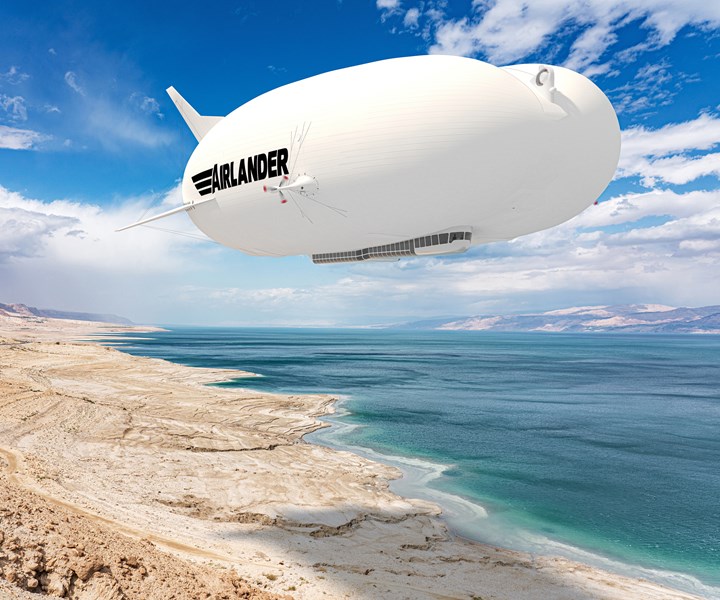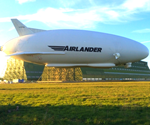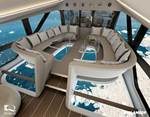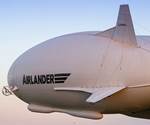Hybrid Air Vehicles unveils production Airlander 10 model
This is a step toward commercial production and type certification for the electric-propulsion, helium-filled, hybrid aircraft.

Airlander 10. Source | Hybrid Air Vehicles Ltd.
On Jan. 11, Hybrid Air Vehicles (HAV, Shortstown, Bedford, U.K.) unveiled the production model of its Airlander 10, a step toward commercial production and type certification for the helium-filled hybrid aircraft. The company says that negotiations with commercial customers are ongoing.
For background on the Airlander 10 and its composite components, see the post “Luxury travel by airship returns.”
According to HAV, the updated aircraft includes enhancements such as a fuel-saving, lower-drag shape; enhanced landing gear; wider, and a longer cabin for passengers, cargo and equipment. These features, HAV says, will provide the flexibility needed to deliver the experiences the commercial market wants to offer to its customers.
The production aircraft is designed to deliver increased efficiency, with the Airlander 10 reportedly producing up to 75% fewer emissions than comparable aircraft. An electric propulsion system with a goal of zero-carbon aviation is being developed with partners Collins Aerospace (West Palm Beach, Fla., U.S.) and the University of Nottingham (Nottingham, U.K.).
HAV is currently in contract negotiations for the Airlander 10’s first four production slots, based on signed letters of intent for more than 10 aircraft with organizations in the tourism and clean technology sectors.
As HAV approaches the launch of the production and type certification program, the company is also working to secure funds for a new production facility.
Related Content
-
Plant tour: Spirit AeroSystems, Belfast, Northern Ireland, U.K.
Purpose-built facility employs resin transfer infusion (RTI) and assembly technology to manufacture today’s composite A220 wings, and prepares for future new programs and production ramp-ups.
-
Plant tour: Joby Aviation, Marina, Calif., U.S.
As the advanced air mobility market begins to take shape, market leader Joby Aviation works to industrialize composites manufacturing for its first-generation, composites-intensive, all-electric air taxi.
-
The potential for thermoplastic composite nacelles
Collins Aerospace draws on global team, decades of experience to demonstrate large, curved AFP and welded structures for the next generation of aircraft.

.jpg;width=70;height=70;mode=crop)












.jpg;maxWidth=300;quality=90)

